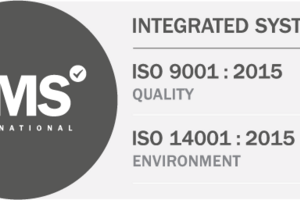27 November 2018
School stress: Can lighting create calm?
We’re told that our school days are the best of our lives, but a recent study by Barnardo’s suggests school can be a serious source of stress for young people. The children’s charity found that almost half of children aged 12 feel sad or anxious at least once a week, with 65% reporting that school is their main cause of stress.
And it’s not just children who are struggling. According to a 2017 survey by the Education Support Partnership, an alarming 75% of teachers experienced physical and mental health issues in the last two years as a result of their work.
It’s clear that stress levels need to be reduced, both for teachers and pupils, and this means providing both with an environment that prioritises their wellbeing. Acoustics, classroom design and colour all have an impact here, and light is increasingly known to play a major role.
Getting the light right
In an ideal world, classrooms would be flooded with natural light but in reality, our buildings don’t always allow this. However, with modern LED systems we can harness the power of light and use it to promote our wellbeing. LED lighting can be adjusted in colour and intensity with a flexibility that means it can support teachers’ and pupils’ changing needs throughout the school day, lowering stress levels in the process.
For example, students can be exposed to a bright blue-rich light early in the school day, stimulating them into wakefulness for the learning sessions ahead. The sheer power of morning light was shown in a study by the Lighting Research Centre, which found that office workers who received a high dose of light in the morning reported lower levels of stress than those receiving low light. Exposure to more light during the day and less light at night helped calibrate the circadian clock, improving sleep patterns and creating happy circle of wellbeing.
“We need to start thinking about how we light our daytime environments,” said lead author Mariana Figueiro. “A robust light and dark pattern (high circadian effective light during the day and low in the evening) is important for our health and wellbeing.”
The human centric approach
So, how can we use classroom lighting to support pupils’ circadian systems? Human centric LED systems provide a great way to tailor lighting, so it bolsters students’ needs. In the morning, luminaires can be programmed with a stimulating brighter, cooler temperature, energising young brains and kickstarting the body clock. Then when downtime is needed, lights can be switched to a calmer, warmer light.
The results seem to speak for themselves. When Lindeborg school in Malmo, Sweden, swapped fluorescent lamps for LED panels, the students reported that they felt less tired and found it easier to concentrate.
Of course, feeling focused doesn’t just boost the wellbeing of students, it has massive benefits for teachers’ stress levels too. Surely there’s little doubt that an alert, attentive class will be more receptive to learning.
A calming impact
Conversely, human centric LED lighting can create calming atmosphere when needed. A less stimulating, warmer light can be put into play during break times or when pupils need to quieten down.
If you’re in any doubt as to how effective this can be, consider a year-long experiment, carried out by the government of Hamburg and The University Medical Centre Hamburg-Eppendorf. When they put Philips SchoolVision lighting, a human centric LED system, to the test with 166 students, they found hyperactive behaviour decreased by a staggering 76%.
Indeed, the versatility of LED lighting means both pupils and teachers can benefit from calming breakout spaces, where they can rest and regenerate between learning sessions. Here, warmer lighting can be used to create a peaceful environment, with the aim of lowering stress levels.
With a worrying number of children citing school as a major source of stress, there’s never been a better time to address how we can change the learning environment to improve wellbeing. After all, when we invest in education we are investing in our future.
LED lighting can be fitted in both modern and old school buildings with minimal fuss. It’s also energy efficient, meaning lower energy bills and public sector institutions may qualify for interest-free Government funding, through Salix Finance Ltd. For more information please contact Greenlite Group, on hello@greenlitegroup.co.uk


